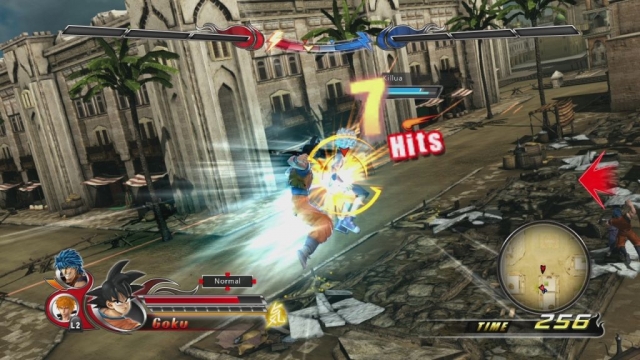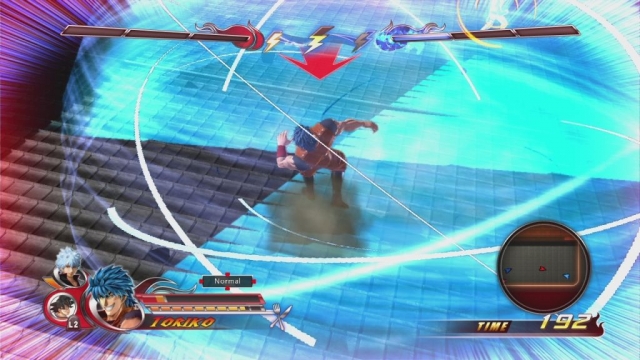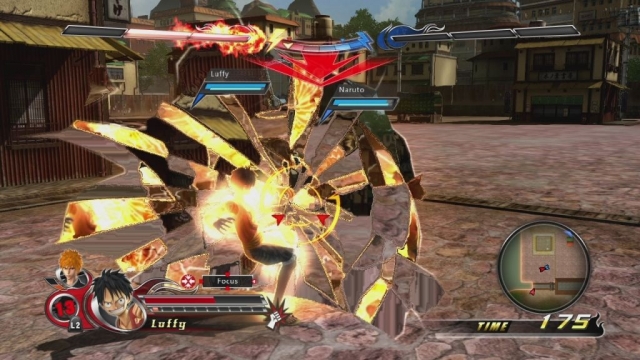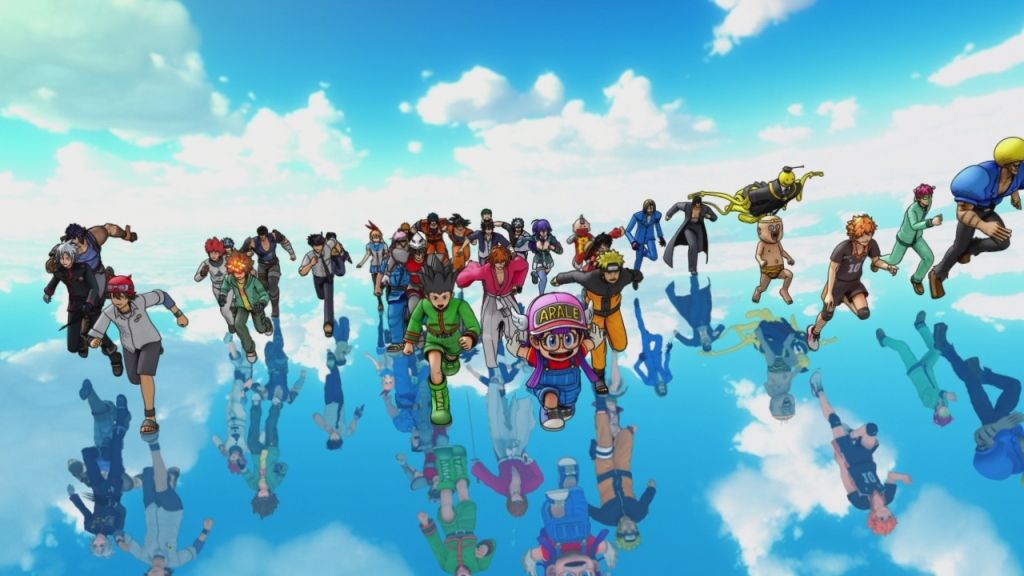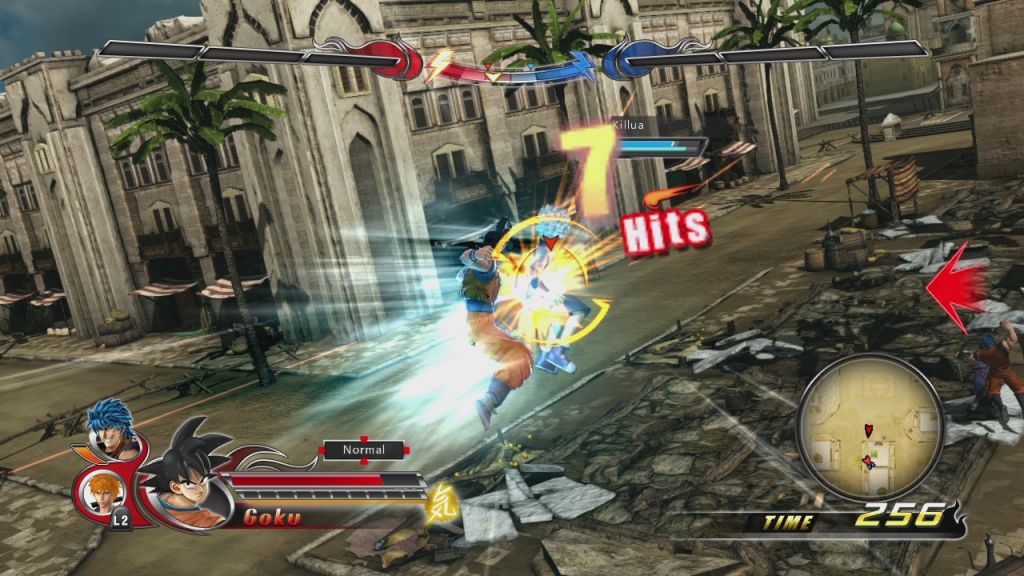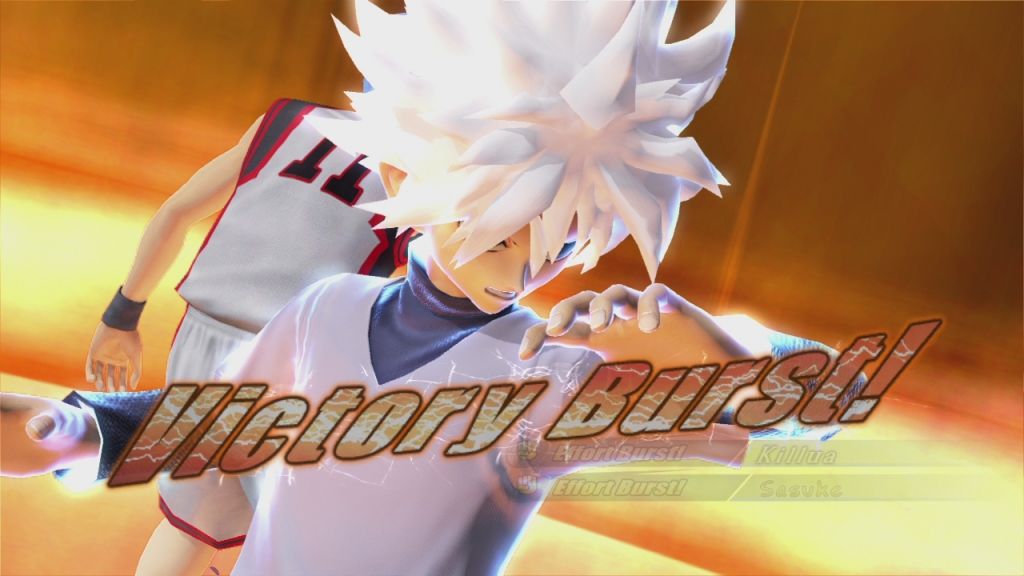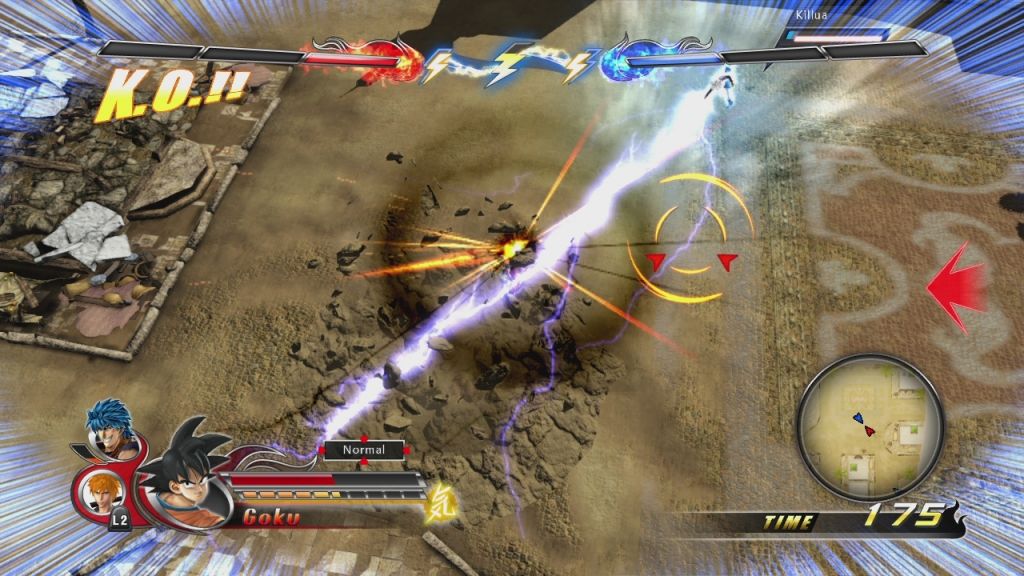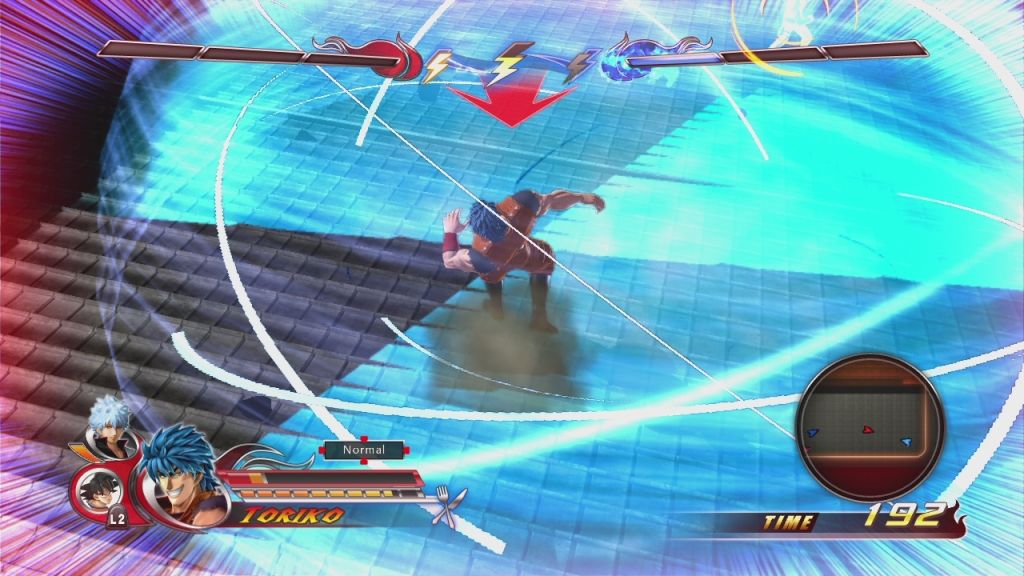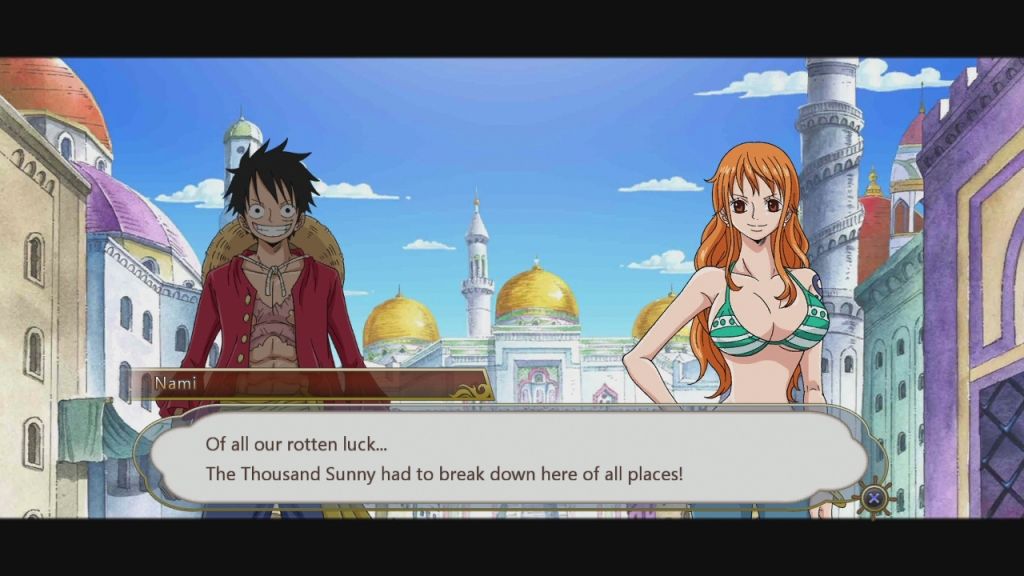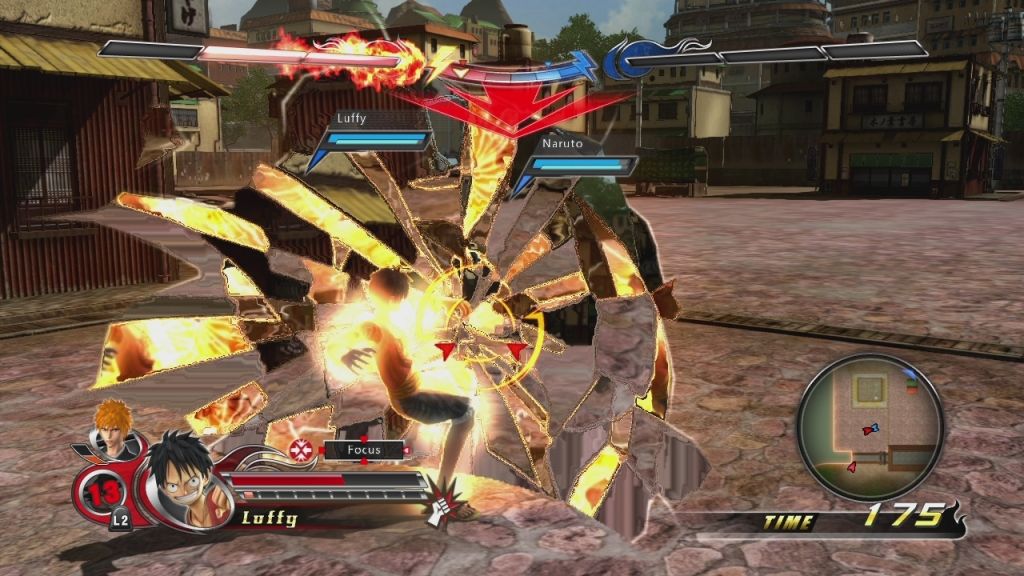J-Stars Victory Vs+
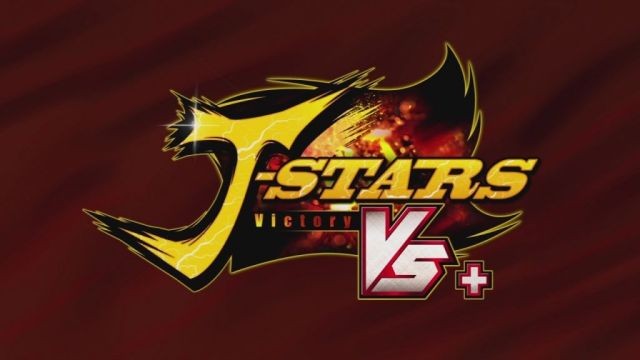
J-Stars Victory Vs + doesn’t just have a wacky title, it has a ton of characters from a wide selection of anime and manga series from over 40 years of Shonen Jump. It’s a two-on-two arena battle game and this PS4 version is essentially an upgraded port from a Japan-only PS3 release. Dragon Ball Z, Naruto, Fist of the North Star, JoJo’s Bizarre Adventure, One Piece, Hunter x Hunter, and To-Love Ru are just some of the franchises represented. Beyond two-on-two combat, you also get assist characters and an in-game shop. However, none of that is worth much without the core game being fun to play.
Unfortunately, that is a big problem with the game. The arenas themselves are large, but it seems to take forever to get anywhere – even with the dash button pressed. The proportions of the levels seem a bit off too – you’ve got a regular-sized roster, but the environments are just gigantic. Sometimes, this works in your favor as it provides cover, but it usually just looks odd. The environments are partially destructible, which is generally always fun.
However, having one engine in play for such a wide array of anime types hurts things. The Dragon Ball characters in a large, empty world just seems a bit odd – even if the super-powered attacks you can build up and even team up on foes with fits in. The JoJo’s Bizarre Adventure cast works well in 2D fighters, while Fist of the North Star has worked out well in brawlers and YuYu Hakusho has worked in a variety of fighting types as well. Here though, the engine doesn’t quite seem to work well for any of them.
Combat takes place in a variety of different modes, but it doesn’t vary much from one to the other. The story mode gives you a choice between four characters, but you’ll really just be seeing the store from different perspectives. It’s not really all that compelling and doesn’t feature much in the way of dialogue outside of little word balloons. There’s a bit of an overworld here, but nothing to sink your teeth into.
The roster is diverse and generally plays fairly differently. You’ve got your short-ranged brawlers, longer-range characters, and projectile-heavy ones. Given that the game’s camera can make judging distance a bit iffy, I found myself really loving Luffy since his Dhalsim-like limbs make getting in hits that can either start off small combos, team attacks, or super moves quite easy.
There’s an illusion of depth with the combat due to there being so many things you can do, but the light, heavy, and special-centric combat wears a bit thin. While each character does play slightly differently, battles still have the same basic formula more often than not. However, one benefit to this is that the game does feel fairly well-balanced. There aren’t any characters that feel cheap, and even with Luffy’s long limbs, they’re only going to give you an edge if you connect – and missing a shot with him does leave you open to attack.
As a local multiplayer game, J-Stars is an even bigger mixed bag than its single player experience. The screen is split in half vertically, so the playing area seems really small. The borders around the screens do look good though, but the sea of meters to keep track of is a nightmare. The game is still playable certainly, but it’s far from the best way to play it. Online play is probably the best overall experience in the game. The single player modes may all have different names, but they’re 99% the same. Online, you know you’re going to get fast-paced arena combat. This expectation means that it’s something you can look forward to. Sure, a bit of lag hurts things sometimes, but for a flashy game it’s not too bad and it runs fairly well offline too.
The game has come under some criticism for not looking all that sharp – and for a PS3 port/cross-generation game, that claim does hold some water. The environments have muddy-looking textures up close, and they break apart in a really cheap and unsatisfying way. Plus, the debris can clutter the screen and make it hard to see, which is made much worse when the camera gets stuck behind you. It also takes a while to move said camera around where you want it.
While those parts are honestly quite annoying, the game as a whole does look quite good. Character models are detailed and appear to be exactly what they should be for 3D representations of 2D artwork. The cel shading on them is fine, although not having it throughout the world seems odd and does create the usual 2D/3D disconnect since the characters don’t look correct to the eye to be living in this 3D world. The animation is perfect, and is just the right mix of smooth and fast to allow things to look true to the anime characters’ normal movements, but not be so elaborate as to screw up the timing of attacks.
J-Stars has an action-packed soundtrack that really does get your blood pumping. The intense voice work during battles helps in that regard too. All of the voice acting is in Japanese, which might annoy some – but with English voice acting being more expensive and this being a fairly niche game, it’s understandable. Since this game is so steeped in Japanese culture to some degree, it feels more authentic with the Japanese-only cast, and I enjoyed that aspect quite a bit.
Unfortunately, J-Stars Victory VS+ isn’t quite good enough to warrant a buy for most people. If you are a big fan of the anime/manga franchises contained within it, check it out. A rental will suffice for most of the game’s demographic, while some die-hards and franchise collectors may want to add it to their collections permanently. It is an interesting piece of anime history in game form, but it’s not a particularly good game. It’s a shame too since the concept has potential, but it’s never fully realized here.
Reviewed By: Jeremy Peeples
Publisher: Bandai Namco
Rating: 65%
——————————————————————————–
This review is based on a digital copy of J-Stars Victory Vs+ for the PlayStation 4 provided by Bandai Namco.
 Game Over Online
Game Over Online